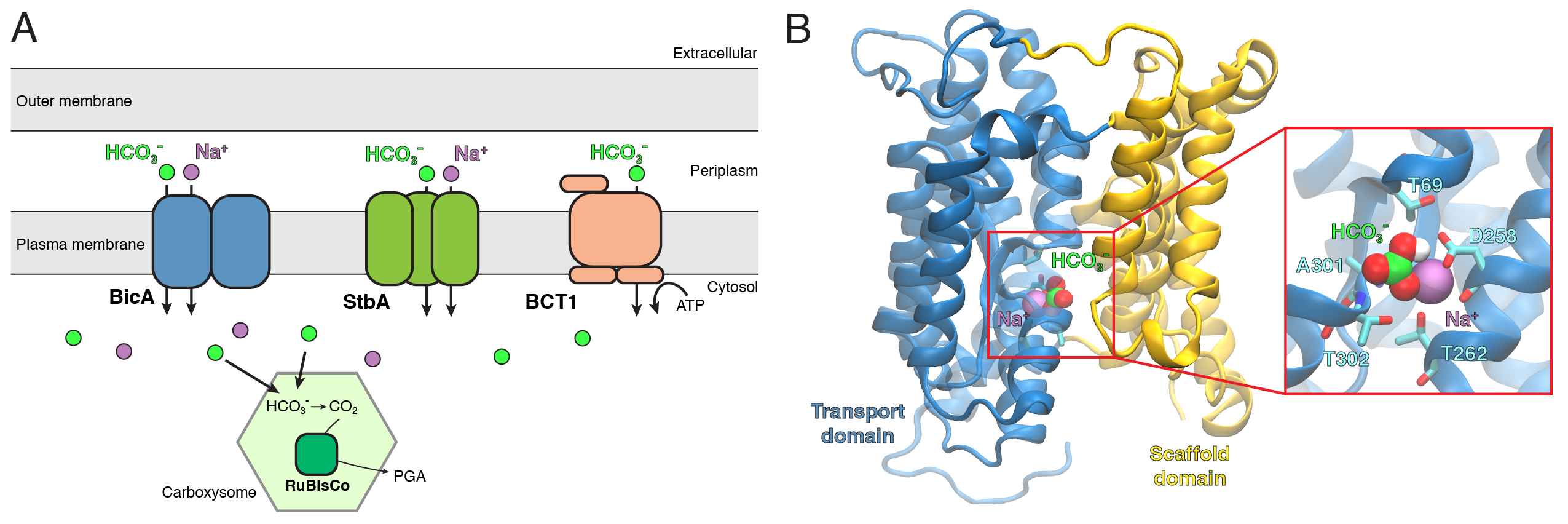Molecular Mechanism of Substrate Transport and Dynamics of the Cyanobacterial Bicarbonate Transporter BicA
Matthew C. Chan, Yazeed Alfawaz, Diwakar Shukla, bioRxiv, In review, Preprint

Abstract
Cyanobacteria are responsible for up to 80% of aquatic carbon dioxide fixation and have evolved specialized carbon concentrating mechanism to increase photosynthetic yield. As such, cyanobacteria are attractive targets for synethic biology and engineering approaches to address the demands of global energy security, food production, and climate change for an increasing world's population. The bicarbonate transporter BicA is a sodium-dependent, low-affinity, high-flux bicarbonate symporter expressed in the plasma membrane of cyanobacteria. Despite extensive biochemical characterization of BicA, including the resolution of the BicA crystal structure, the dynamic understanding of the bicarbonate transport mechanism remains elusive. To this end, we have collected over 1 ms of all-atom molecular dynamics simulation data of the BicA dimer to elucidate the structural rearrangements involved in the substrate transport process. We further characterized the energetics of the cooperativity between BicA promoters and investigated potential mutations that are shown to decrease the free energy barrier of conformational transitions. In all, our study illuminates a detailed mechanistic understanding of the conformational dynamics of bicarbonate transporters and provide atomistic insights to engineering these transporters for enhanced photosynthetic production.